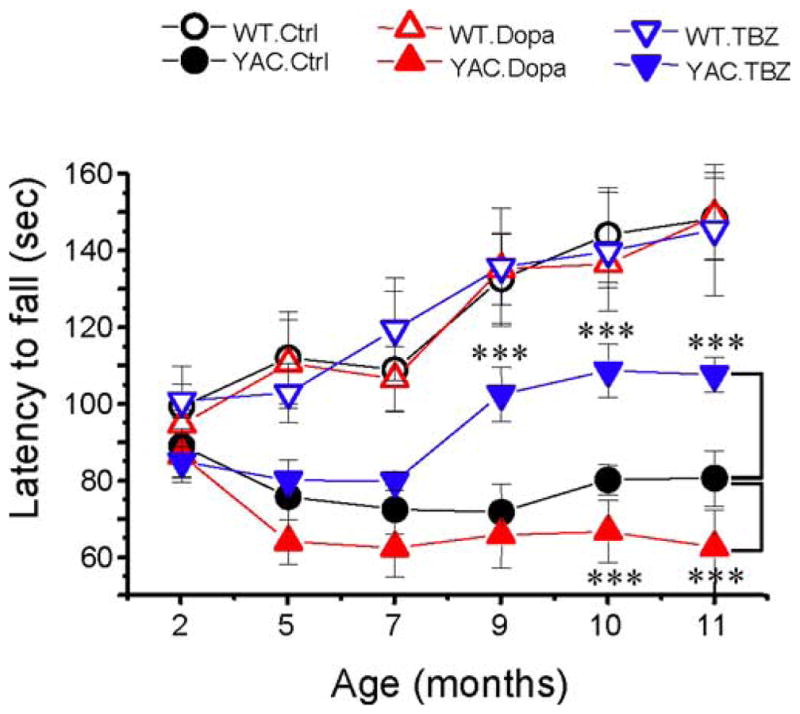Figure 4.

Rotarod performance of YAC128 mice. An average latency to fall from the accelerating rotarod is shown for the WT control (Ctrl) mice (open black circles), the YAC128 (YAC) control mice (filled black circles), the WT mice fed with L-DOPA (open red triangles), the YAC128 mice fed with L-DOPA (filled red triangles), the WT mice fed with L-DOPA/TBZ (open blue triangles), and the YAC128 mice fed with L-DOPA/TBZ (filled blue triangles). For each group of mice, the results are shown as mean ±SEM (for the number of mice in each group, see Table 1) at 2, 5, 7, 9, 10, and 11 month (washout) time points. At 5, 7, 9, 10, and 11 months of age, control WT mice performed significantly better (p < 0.05) than control YAC128 mice. YAC128 mice fed with L-DOPA (filled red triangles) performed significantly worse (***p < 0.05) than control YAC128 group at 10 and 11 months of age. YAC128 mice fed with L-DOPA/TBZ performed significantly better (***p < 0.05) than control YAC128 mice at 9, 10, and 11 months of age but significantly worse (p < 0.05) than WT mice at 5, 7, 9, 10, and 11 months of age.
